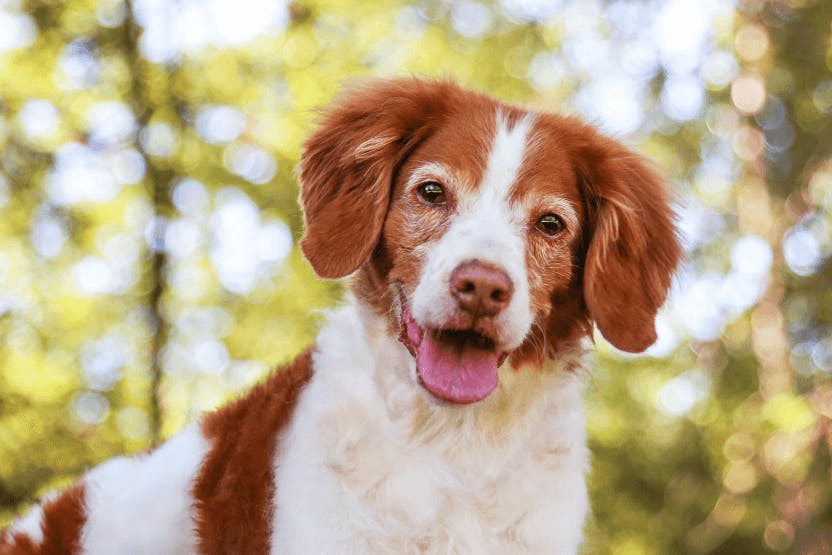
Written by Adam Lee-Smith
Veterinary reviewed by:
Published: 04/04/2022, edited: 04/17/2023
Overview
While the second week of April is National Dog Bite Prevention Week, dog bite injuries affect people all year round. Over 4.5 million people are bitten by dogs in the U.S. annually, according to the American Veterinary Medical Association (AVMA). Of those people affected, 1 in 5 require medical attention.
All dogs — regardless of their breed, gender, or size — are capable of biting. Dogs can bite for various reasons, from fear to illness to poor socialization.
Let's look at a few ways you can keep your people and pups safe from dog bites.
Train your dog properly during puppyhood
Fear of unfamiliar people or situations is a common reason why dogs bite. Solid socialization training is key to ensuring your dog is well adjusted and not fearful of strangers. Socialize your dog with other people and other pups from a young age, and expose them to as many different sights, sounds, and experiences as you can.
Teaching your puppy bite inhibition is also essential. Puppies bite while playing, so it's important to let your puppy know when they're biting too hard. Letting out a yelp or an "ow!", just like their littermates or mother would, lets your pup know they're being too rough. If this approach doesn't discourage your pooch, turn away, or put your pup in their crate for a quick time-out.
It's also a good idea to brush up on your dog's obedience training and learn to redirect your dog's attention if they're showing signs of aggression.
Pay attention to a dog's body language
Dogs can't tell us how they feel, so it's important to know how to read a dog's body language. A dog's body language will let you know when they're feeling aggressive, playful, fearful, or relaxed. Signs of aggression in dogs include:
- Bared teeth
- Raised hackles
- Alert ears
- A stiff, upright tail
- A wrinkled nose
While this body language is easy to read, especially when accompanied by growling, other threatening body language cues are more difficult to decipher. For example, it's harder to tell when a dog is feeling fearful. Signs of fear in dogs include:
- Flat ears
- Closed or narrowed eyes
- A closed mouth
- Head turned away
- Tail tucked away
- A low stance
If a dog is showing signs that they're fearful, they want to be left alone, so exercise caution. If cornered or pursued, the dog may lash out at a person or animal.
Avoid dangerous situations
You can limit the chances of being bitten by a dog by avoiding dangerous situations. The best time to interact with a dog is when they're with their pet parent.
Before touching a dog or letting your dog play with another dog, ask their pet parent if it's okay. If they say no, keep your distance. Avoid interacting with a dog that isn't with their pet parent, especially if the dog is loose in a yard. Even dogs that seem friendly could be territorial and may bite you if you reach through a fence to pet them.
Avoid petting a dog when they are eating or sleeping. A sleeping dog may be surprised by the sudden contact from a stranger. Many dogs with resource guarding issues are also protective over their food and may bite anyone who disturbs them while eating.
Never leave a dog unattended with a child
Children are at the most risk of being bitten by dogs. Of the 4.5 million people bitten by dogs each year, over half are children. There is some good news, though — the number of dog bite injuries among children and adolescents decreased by 34% between 2000 and 2017.
However, dog bite injuries are still a major cause of concern for parents of young children. From 2000 to 2017, more than 2 million emergency department visits involved pediatric patients with dog bite injuries.
Here are a few tips for keeping children safe from dogs (and dogs safe from children!):
- Always supervise your child's interactions with your dog. If your dog displays signs of fear, discomfort, or aggression, remove your child from the situation.
- Never let your child disturb your dog during mealtimes. Resource guarding is a common cause of dog bites among children and adolescents.
- If your child is old enough, teach them how to recognize dog body language so they can safely play with their pup.
Keep your dog is healthy
A dog's health can play a significant role in their likelihood of biting another person or animal. Underlying health conditions can also cause overprotective behavior.
Unfortunately, dogs can be good at hiding pain and other symptoms. If you happen to unknowingly touch or approach the injured area of your dog, they could lash out. This could happen to another dog when playing together at a dog park or to you at home.
You'll also want to keep your dog's vaccinations up to date. Rabies can cause aggressive and irritable behavior. Being bitten by a dog with rabies is especially dangerous, as they can pass the virus to humans.
Related: How Common is Rabies Among Stray Dogs in the US?
Not only will regular vet visits and up-to-date vaccinations reduce the risk of aggressive behavior, but they'll also ensure your fur-baby lives a long, happy, and healthy life by your side. Vet care bills can pile up fast, but pet insurance can reimburse up to 100% of the costs within 3 days. Compare pet insurance plans to find the "pawfect" plan for your fur-baby.
Comments (0)
Leave a comment
Related articles
About Wag!
© 2024 Wag Labs, Inc. All rights reserved.
About Wag!
© 2024 Wag Labs, Inc. All rights reserved.
Security
© 2024 Wag Labs, Inc. All rights reserved.